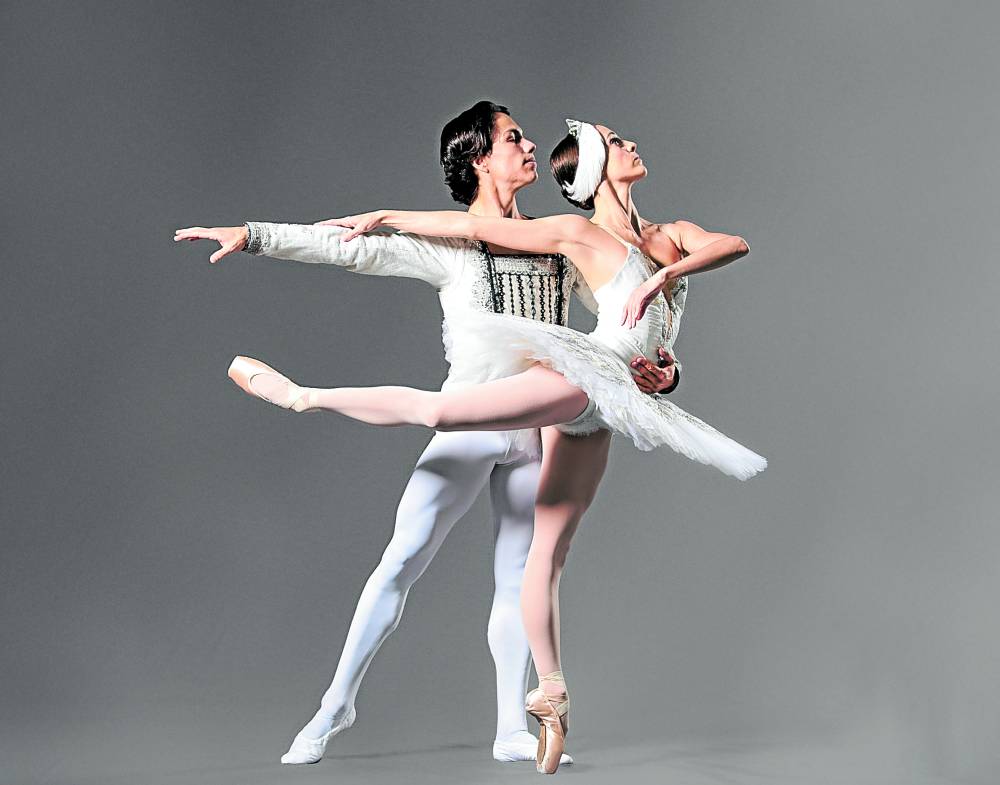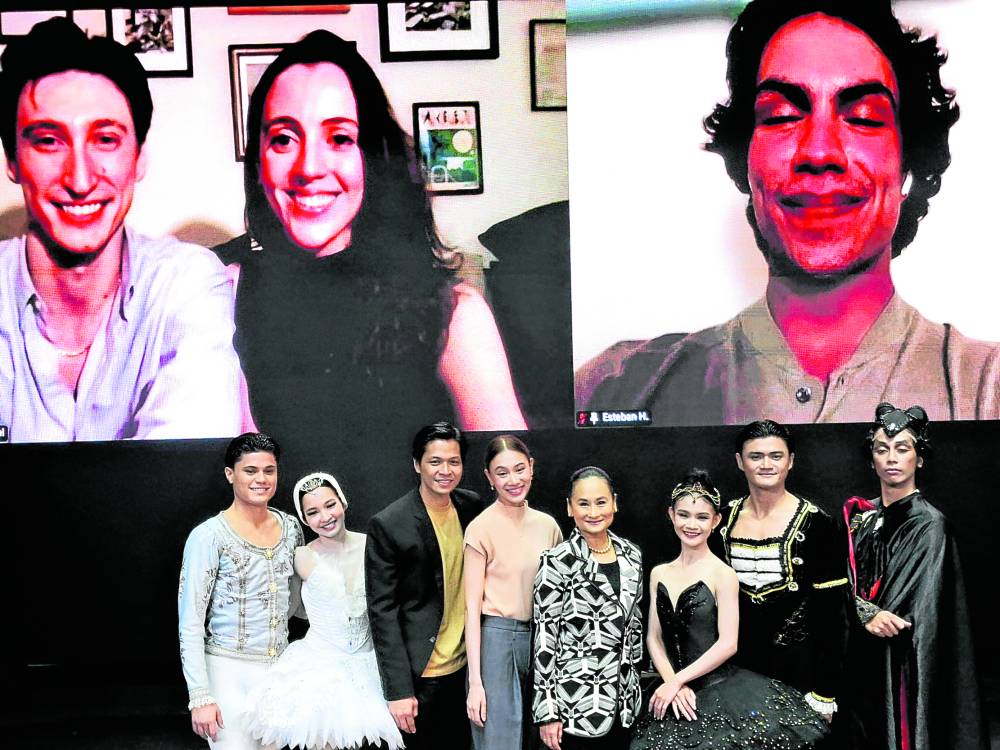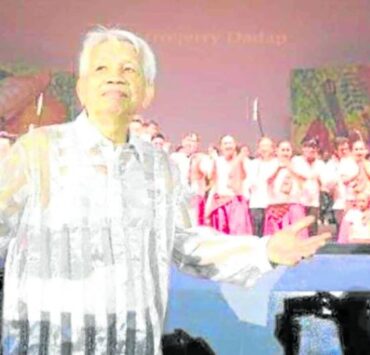American ballerina returns to Ballet Manila to reclaim her role

At 18, American ballerina Katherine Barkman took a bold leap, launching her professional career in the Philippines. Skipping the ranks, she became Ballet Manila’s (BM) youngest-ever principal dancer.
Now 28 and a newly minted first soloist with the San Francisco Ballet (SFB), she returns to BM—where it all began—to reprise the role of Odette/Odile in “Swan Lake,” which she debuted at Aliw Theater in 2017.
“Swan Lake” is the story of Prince Siegfried, who falls in love with Odette, a princess cursed to live as a swan by day. When the sorcerer Rothbart sends his daughter Odile—Odette’s dark double—to deceive him, Siegfried must fight to uncover the truth and break the spell.
Barkman’s interpretation has been shaped by artistic directors who were once stars themselves—BM’s Lisa Macuja-Elizalde, Julie Kent (formerly of the Washington Ballet and now Houston Ballet), and SFB’s Tamara Rojo.
Elizalde, her first-ever coach to have extensively performed classical lead roles, built the foundation for the dancer to tackle different versions of “Swan Lake” and the pas de deux with various partners. A former soloist at the Mariinsky Theatre, Elizalde insisted Barkman debut in the most authentic, technically demanding version of the ballet.

BM’s artistic director explains that what sets the Mariinsky’s “Swan Lake” apart is its fidelity to the original Petipa-Ivanov choreography. Unlike many Western versions that allow reinterpretation, the Mariinsky version preserves the full classical vocabulary, demanding rigor without shortcuts. This version, adopted by BM, features extended adagios for Odette and complex transitions throughout the pas de deux and coda, testing a dancer’s control and stamina.
Rooted in the Vaganova tradition, it emphasizes purity of line, fluidity, and expressive depth, requiring dancers to maintain both technical precision and emotional nuance in even the most physically taxing passages.
Adding to the challenge, the Mariinsky version presents “Swan Lake” in its full four-act structure, requiring endurance from soloists and corps alike. With the company’s high artistic standards and meticulous execution, even the smallest mistake can break the illusion.
Growth spurt
At just 20, Barkman spent months preparing for her debut. Elizalde pushed her to master both technical clarity and expressive depth, particularly in the role of Odette, the White Swan. Elizalde likens Odette’s choreography to a growth spurt—not in appearance, but in emotional intensity. The role requires abrupt shifts from stillness to full expression, without a gradual build. A ballerina must deliver strength, control, and artistry all at once.
“You need legs of steel,” Elizalde says, “but at the same time, the soft, vulnerable quality that Odette exudes. They’re polar opposites.”
Barkman recalls, “She always reminded me it’s not just about hitting a pose. It’s about the aura that carries through it.” That lesson became crucial as fatigue set in during the demanding ballet.
“She told me, ‘You’ll do many versions later, but start with the original one,’” Barkman adds. She has since danced five different versions of the Black Swan pas de deux and other versions of the ballet. “It was important to build that foundation so I wasn’t afraid of anything. Now I can explore even new versions without being intimidated.”
Elizalde is known for her demanding classes, and expects dancers to give everything—from the first plié to the final grand jeté (leap.) “It helps that our studio isn’t air-conditioned,” she says. “Katherine trained in over 30-degree heat, which built her stamina. And we don’t watch the clock—we work as long and hard as needed.”
She describes Barkman as a true bunhead—a dancer wholly consumed by the craft. “Katherine lived across the street from the studio and would text me on days off or late at night asking to rehearse more,” says Elizalde. “And since we’re not bound by union rules, we just kept going.”
In 2018, Barkman joined The Washington Ballet as a principal dancer. There, she trained under Julie Kent for “Swan Lake” at the Kennedy Center.
A former star of American Ballet Theatre, Kent helped Barkman unlock a more lyrical, expressive Odette. Kent’s interpretation of the role is considered iconic for its poetic lines and quiet power. She worked closely with Barkman to refine both technical and emotional nuances.
“She let me explore,” Barkman says, “and reminded me it doesn’t all have to be so square or static.”
Watercolor
One moment stood out: Barkman was struggling with the famously difficult opening of Odette’s solo—a double rond de jambe en pointe, a ballet move where the dancer traces a circular motion with the working leg while balanced on the toes. Growing frustrated, she paused.
Kent’s advice was simple but transformative: “Some things you dance like ink on paper, others like watercolor. This is watercolor.” The image shifted Barkman’s mindset. She softened the effort, letting movement flow through her with the elusive, featherlight grace that defines Odette.
Under SFB’s artistic director Tamara Rojo, a former Royal Ballet star, Barkman reimagined Odile, the Black Swan. Rather than treating her as Odette’s dark mirror, Rojo urged her to ground Odile in character and physicality. “Why are you walking on your tippy toes?” Rojo asked, emphasizing Odile’s humanity—seductive, cunning, and calculated.
Rojo taught her to articulate the foot differently, reserving lightness for Odette. Odile should feel rooted—like someone mocking a swan to deceive the prince. That insight radically altered Barkman’s approach.
Aside from redefining Odile, Rojo challenged her to take artistic and technical risks. If Barkman could hold a balance longer or add a pirouette, she was encouraged to try. Rojo emphasized dynamic power—even in simple steps—and rejected “rest moments.” She once told Barkman, “I don’t want you to dance it comfortably. I want you to be exciting.”
That mindset pushed Barkman past polished technique into raw strength and emotional volatility. “You’re just as strong as your partner,” Rojo told her. “You’re equals.” That notion of equality and physical command reshaped Barkman’s approach to performance.
On May 30, May 31, and June 1, Barkman will dance with SFB principal Esteban Hernandez, known for crisp technique and charismatic stage presence. His precision and energy make him a dynamic counterpart for the emotional intensity of “Swan Lake.”
At 6’2,” SFB soloist Nathaniel Remez is cast as Prince Siegfried to the long-limbed Abigail Oliveiro’s Odette/Odile. For his debut on May 31 and June 1, SFB colleagues have been offering tips.
Barkman never planned to date someone within the company—until she met Remez. “When I met him, I thought, how inconvenient that you work here—but I knew he was my match,” she says. Their heights (she’s 5’2”) and roles don’t often align for partnering, but she adds, “He’s incredibly supportive, and I’m the same for him. That’s what really matters.”

















